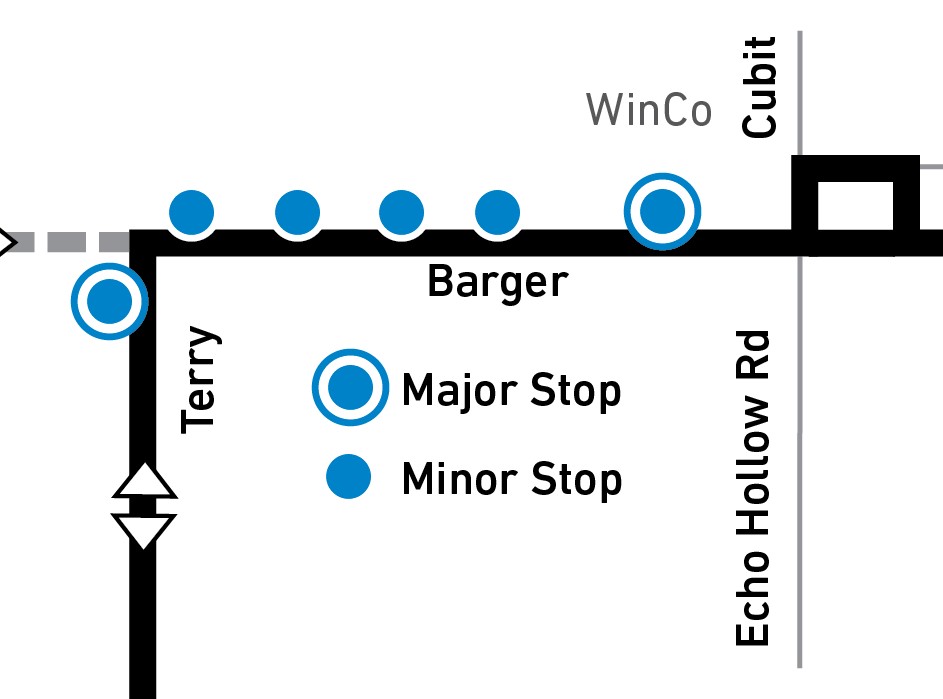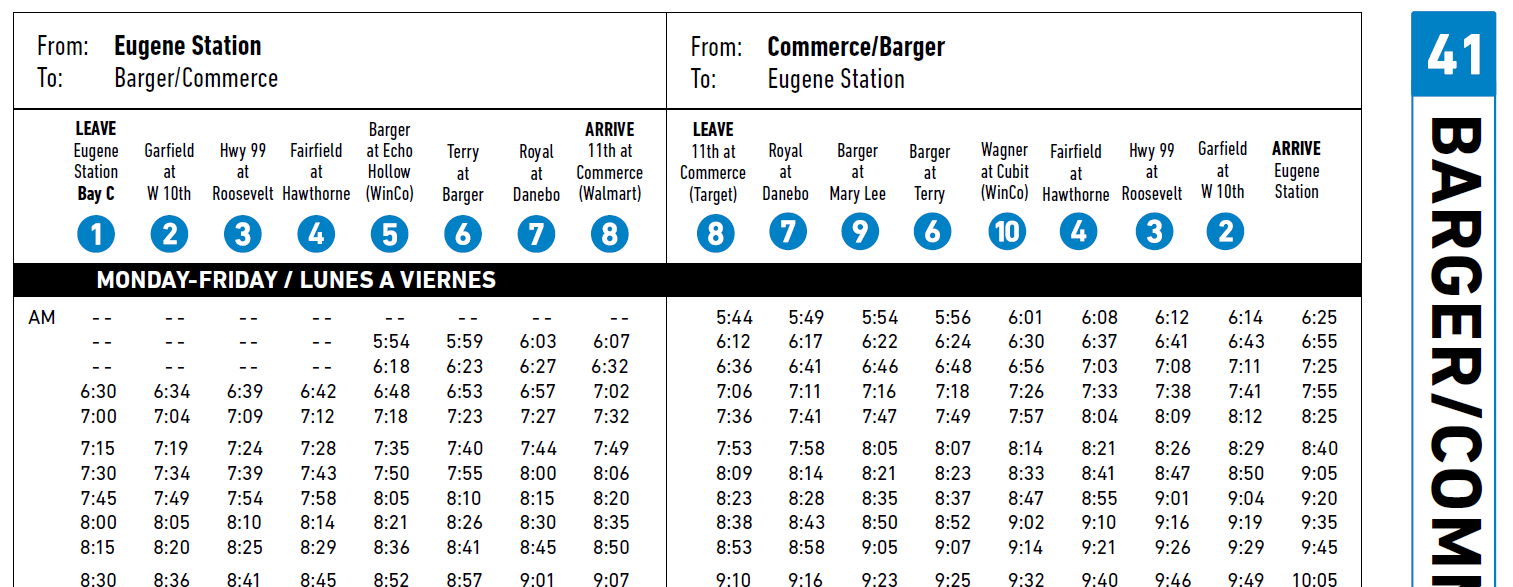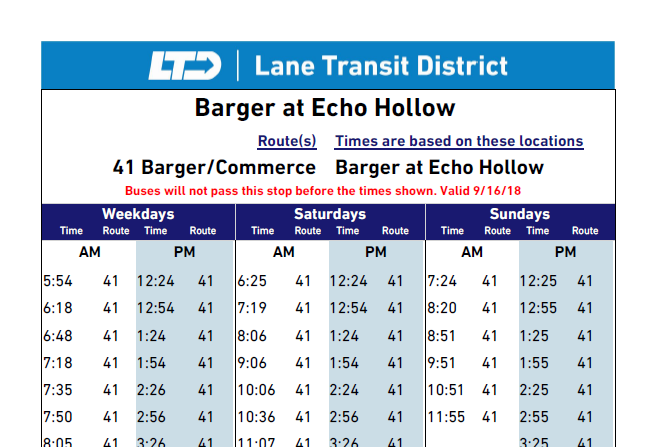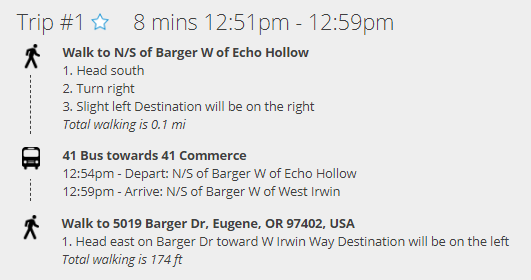Planning a Trip 101 – Understanding Published Times
Riding the bus can be a great way to get around whether you’re traveling to work, shopping, or sightseeing. Understanding now to read the schedules is an easy skill once you understand some of the basics.
Whether you get your bus schedule from the printed Rider’s Guide, at a schedule at a station/bus stop, or online through LTD.org it is useful to understand some of the nuances.
Major and Minor Stops

In between Major Stops are Minor Stops. Minor Stops make up the majority of the system. They are usually located in places that are safe, convenient to a particular landmark, and usually away from a major intersection. LTD’s buses serve these Minor Stops just like Major Stops but with one big difference, the bus operator is not required to depart at a specific time. The segment of a bus route between two Major Stops, including all of the Minor Stops, is where all of the variables can happen to throw a bus off schedule. These can include traffic, weather, assisted boardings, detours, etc.
Understanding Published Times
There are a variety of places you will find published times throughout LTD’s system. Understanding whether these times are based on a Major Stop, a Minor Stop, or affected by real-time will help you better plan your trip.Rider’s Guide
The Rider’s Guide is the definitive source to use to plan a general trip from point A to point B. All of the times published in the Rider’s Guide are Major Stops. That means an on-time bus will not depart any earlier than what is printed in the Rider’s Guide. If your bus stop is in between two Major Stops, you can estimate the arrival of the bus by looking at the time listed for the previous Major Stop on your route. It’s a good rule of thumb to always arrive five minutes early.

LTD.org
The schedules on each route page on LTD’s website are the same published times as the Rider’s Guide. All times are Major Stops, meaning you can count on an on-time bus not departing that location any sooner than the published time.

Bus Stop Information signs, also called BSIs, are the smaller enclosed schedules found attached to some bus stop poles. If the BSI is at a Major Stop, an on-time bus will not depart any sooner than the times listed on the schedule. If the BSI is at a Minor Stop, the times listed are from the previous Major Stop. Treat the times at a Minor Stop as an estimate since a bus between Major Stops can experience delays due to traffic, weather, assisted boardings, detours, etc. The header of the BSI will list the location the times are based on.
Station Graphics
The larger schedules found at all major stations, usually posted at each bay, are based on the published times in the Rider’s Guide. Because these stops are considered Major Stops the buses will not depart any sooner than the times shown.
EmX Station Schedules
The larger schedules found at EmX stations are a mix of Major and Minor Stops. To determine which EmX Station is a Major Stop, use the Rider’s Guide. The EmX Stations found in the Rider’s Guide are all treated as Major Stops, meaning on-time buses will not depart any sooner than the time listed. For all other EmX Stations, the times listed are an estimate of when the bus will depart. Actual departure times can depend on variety of factors including traffic, weather, assisted boardings, detours, etc. It is a good idea to use the times at these stops as a guide and always arrive five minutes early.

The trip planner on LTD’s website functions much the same as Google Transit Maps. Enter the starting and ending point along with any of the other options such as date, time, departing/arriving, and type of trip. The results of the trip planner start with the published times in the Rider’s Guide. Variations on these times may be displayed because the trip planner is analyzing real-time data from an active bus and adding time if the bus is delayed. It is a good idea to treat the information any trip planner gives you as a guide and details can change at any time. For example, if the bus you are trying to catch makes up time since you entered your trip into the planner, it is possible it will pass your stop before the time the trip planner initially estimated. It’s always a good idea when using a trip planner to refresh it often and arrive five minutes before the displayed departure time.

